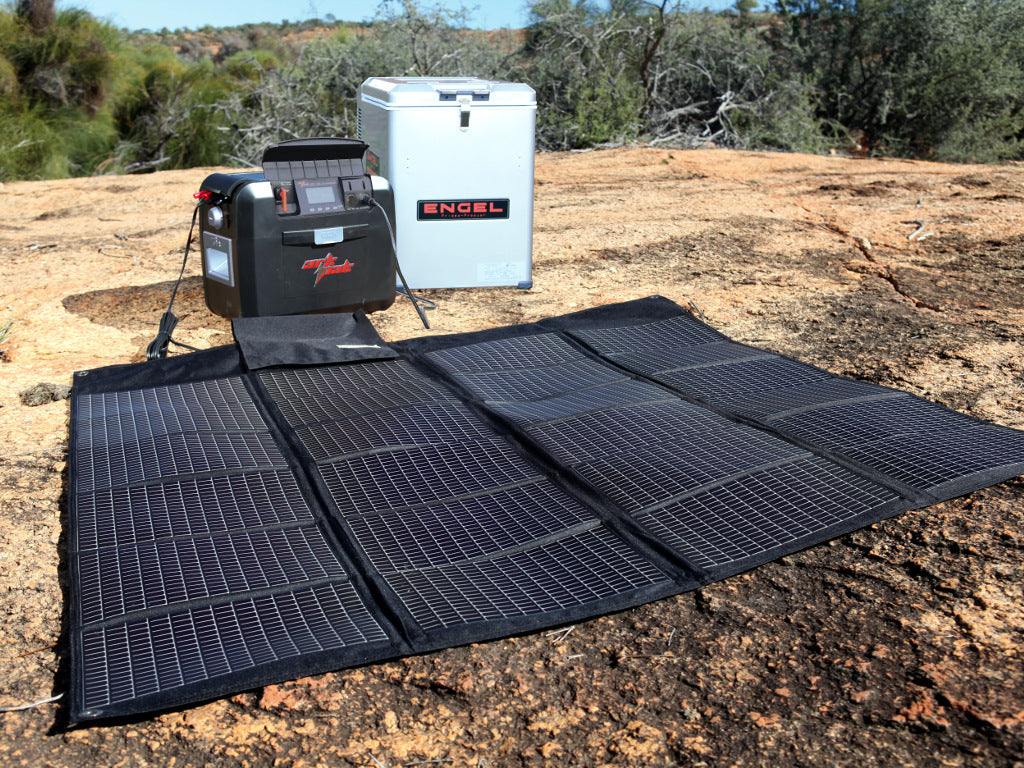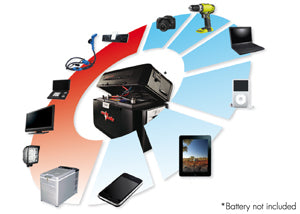Solar Power
Solar panels convert the sun's free energy into DC electricity, which in turn charges your battery via a solar charge controller.
To enjoy an unlimited supply of free energy and hence an unlimited supply of power, 24 hours a day, all you need to do is to:

Set up your solar panel in the sun (ideally at a 30 degree angle) and connect it to your ArkPak, via the external terminals, making sure you go through a solar charge controller to protect your battery from overcharging.

You can store up to 130 amp hours of power in your ArkPak with the largest size battery in it. That's the equivalent of around 1,560 watt hours - more than any other device of it's kind in the USA - in a convenient, compact & portable case.

Pair text with an image to focus on your chosen product, collection, or blog post. Add details on availability, style, or even provide a review.
Solar Calculations
How much power you manage to collect and store in your ArkPak depends upon the following 5 key things:
- What size solar panel you have
- What type of solar panel you have
- How the panels are positioned relative to the sun
- The amount of sunshine available each day
- The ambient temperature at the time
Whilst you can’t control the weather or the temperature at the time, you can control what solar power system you choose and how you position your panels.
Before doing this, there are 4 things to consider when choosing a solar power system:

1. Likely power consumption:
The power consumption of your applicance(s) is measured in watts drawn per hour. Multiply the number of watts your appliance draws per hour x by the number of hours you plan to use it each day.
Watts X Time = Daily power consumption
i.e laptop (65W) - 65W x 5 hours = 325 watts per day
2. Battery capacity:
Battery capacity is the amount of energy your battery can store. This is measured in amp hours (Ah). To convert amp hours into watts, multiply the amp hours by the battery voltage
i.e. For a 130ah battery:
130ah x 12V = 1560 watts battery capacity.
3. Solar power generation:
The power generation of solar panels is measured in watts per hour. Multiply the watts size of the solar panel by the time exposed to the sun. Then multiply this by the natural factor of 0.8 as this factors in the natural loss of energy through panel inefficiency and weather.
Watts x Sun time x Natural factor = Power generation
i.e. For a 60 watt solar panel: 60W x 8 hours x 0.8 = 384 watts per day
4. Solar charge controller:
Solar charge controllers regulate the current from the solar panels and prevent the battery from over-charging. Solar charge controllers need to be matched correctly to, or above, the output current of the solar panels.
